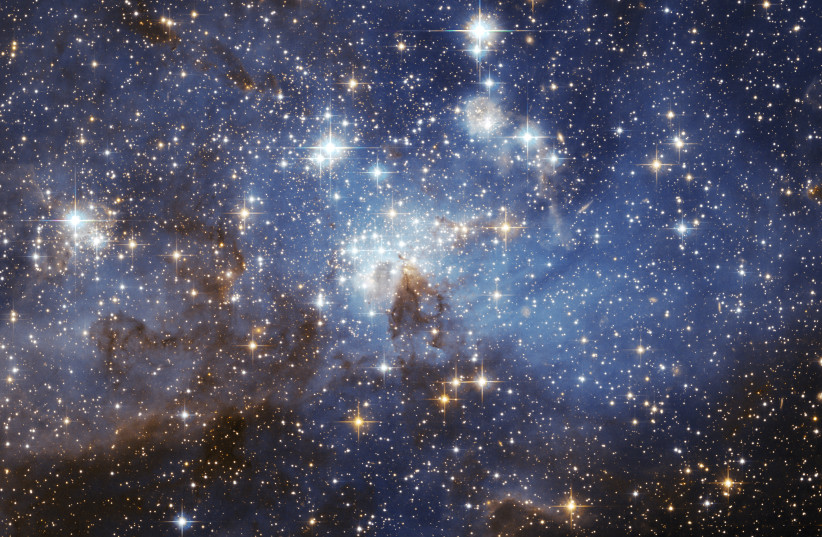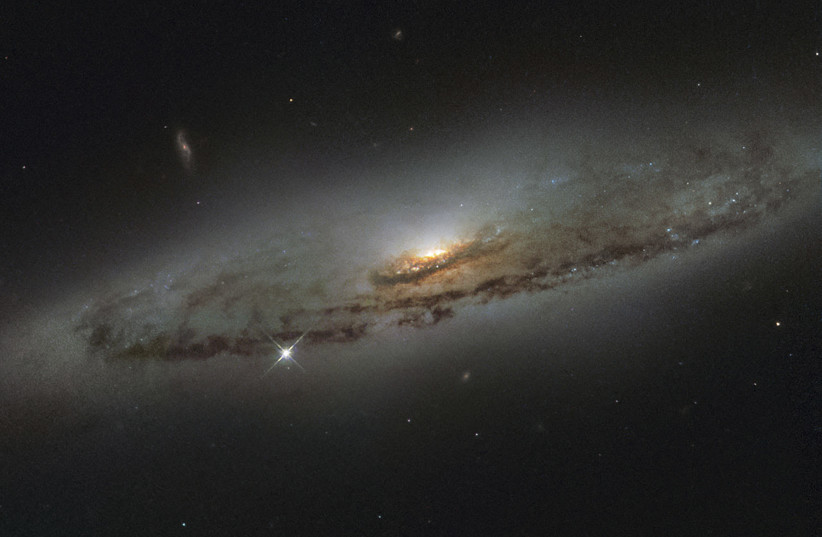A newly discovered planet in a distant solar system has been identified as a potential candidate for having a magnetic field similar to that of Earth.
The planet, named YZ Ceti b, is roughly the same size as our planet and is located approximately 12 light-years away.
Scientists believe that a magnetic field plays a crucial role in protecting a planet's atmosphere from the high-energy particles and plasma emitted by the sun. Their findings were published in the journal Nature.
This finding suggests that YZ Ceti b may have the necessary conditions to support life as we know it, making it an exciting discovery in the search for habitable exoplanets.
Using the Karl G. Jansky Very Large Array radio telescope, researchers Sebastian Pineda and Jackie Villadsen have detected a repeating radio signal originating from the star YZ Ceti.

The telescope is operated by the US National Science Foundation's National Radio Astronomy Observatory, which supports the duo's research to study the interactions of magnetic fields between distant stars and their orbiting planets.
"The search for potentially habitable or life-bearing worlds in other solar systems depends in part on being able to determine if rocky, Earth-like exoplanets actually have magnetic fields," Program director for the National Radio Astronomy Observatory, NSF's Joe Pesce said. "This research shows not only that this particular rocky exoplanet likely has a magnetic field but provides a promising method to find more."
According to Pineda, an astrophysicist at the University of Colorado, a planet's magnetic field has the ability to protect its atmosphere from being eroded by particles discharged from its star over time.
"Whether a planet survives with an atmosphere or not can depend on whether the planet has a strong magnetic field or not," Pineda explained.
Second star to the right of the radio signal
While pouring over data at her home on a weekend, Bucknell University astronomer Villadsen was the first to isolate an unusual radio signal that had never been observed before.
"I'm seeing this thing that no one has seen happen before," Villadsen says.
According to Pineda, the initial burst of the radio signal was "beautiful." However, it was the second sighting that really caught their attention. Pineda said, "When we saw it again, it was very indicative that, OK, maybe we really have something here.
The team of astronomers is now studying the signal further to try and determine its origin and meaning. The exciting discovery has the potential to lead to groundbreaking advancements in our understanding of the universe and could pave the way for new space discoveries in the future.
Scientists face a challenge when it comes to determining if a distant planet has a magnetic field, says Villadsen.
Because these fields are invisible, detecting them requires finding new ways to observe them. To do this, Villadsen and her team are searching for planets that are similar in size to Earth and located in close proximity to their stars.
Although they are too close to support life, these planets pass through a dense cloud of material that is ejected from their stars, allowing for the detection of their magnetic fields.

This is done by observing the radio waves emitted by the stars when the planet's magnetic field interacts with the star's material. This groundbreaking discovery will provide new insight into the formation of planetary magnetic fields and their potential impact on habitability.
YZ Ceti's attention-grabbing
YZ Ceti, a small red dwarf star and its orbiting exoplanet, YZ Ceti b, have caught the attention of scientists due to their unique proximity.
YZ Ceti b completes a full orbit around its star in just two days, a feat unparalleled in our solar system, where the shortest orbit is that of Mercury's at 88 days.
This close proximity provides an opportunity for scientists to observe the interaction between the planet and its star's magnetic fields.
As plasma from the star collides with the planet's magnetic "plow," it generates radio waves that can be observed from Earth.
This allows scientists to measure the strength of the radio waves and deduce the magnetic field of the planet. The findings from this research will offer new insights into planetary magnetic fields and their impact on the habitability of exoplanets.
Another world with northern lights
"This is telling us new information about the environment around stars," Pineda said. "This idea is what we're calling 'extrasolar space weather.'"
Astronomers have discovered that the interactions between YZ Ceti b and YZ Ceti produce a spectacular aurora on the star's surface. The finding sheds new light on how magnetic fields behave on other planets beyond our solar system.
While auroras are a common phenomenon in our solar system, they have never been observed on other stars until now.
The team of researchers used the Chandra X-ray Observatory to study YZ Ceti b and its star, which is located about 12 light-years away from Earth.
The study revealed that the planet's magnetic field interacts with the star's own magnetic field, causing a burst of high-energy particles that create a stunning light show on the star's surface. Unlike the auroras on Earth, which are visible in the sky, the aurora on YZ Ceti's star is on the star itself.
The discovery provides new insights into the complex relationship between the planets and their host stars. It also highlights the importance of understanding how magnetic fields behave in different planetary systems, which could have implications for the search for habitable planets beyond our solar system.
While the discovery is exciting for astronomers, it also underscores the potential dangers of space weather. Just as the sun's activity can disrupt telecommunications and damage satellites, the high-energy particles from YZ Ceti's aurora could pose a threat to any nearby spacecraft.
Understanding the behavior of magnetic fields on other planets will be crucial for future space exploration and the safety of our technology in space.
"We're actually seeing the aurora on the star - that's what this radio emission is," Pineda explained. "There should also be aurora on the planet if it has its own atmosphere."
"This could really plausibly be it," Villadsen said. "But I think it's going to be a lot of follow-up work before a really strong confirmation of radio waves caused by a planet comes out."
"There are a lot of new radio facilities coming online and planned for the future," Pineda said when talking about possibilities for research in the future. "Once we show that this is really happening, we'll be able to do it more systematically. We're at the beginning of it."
